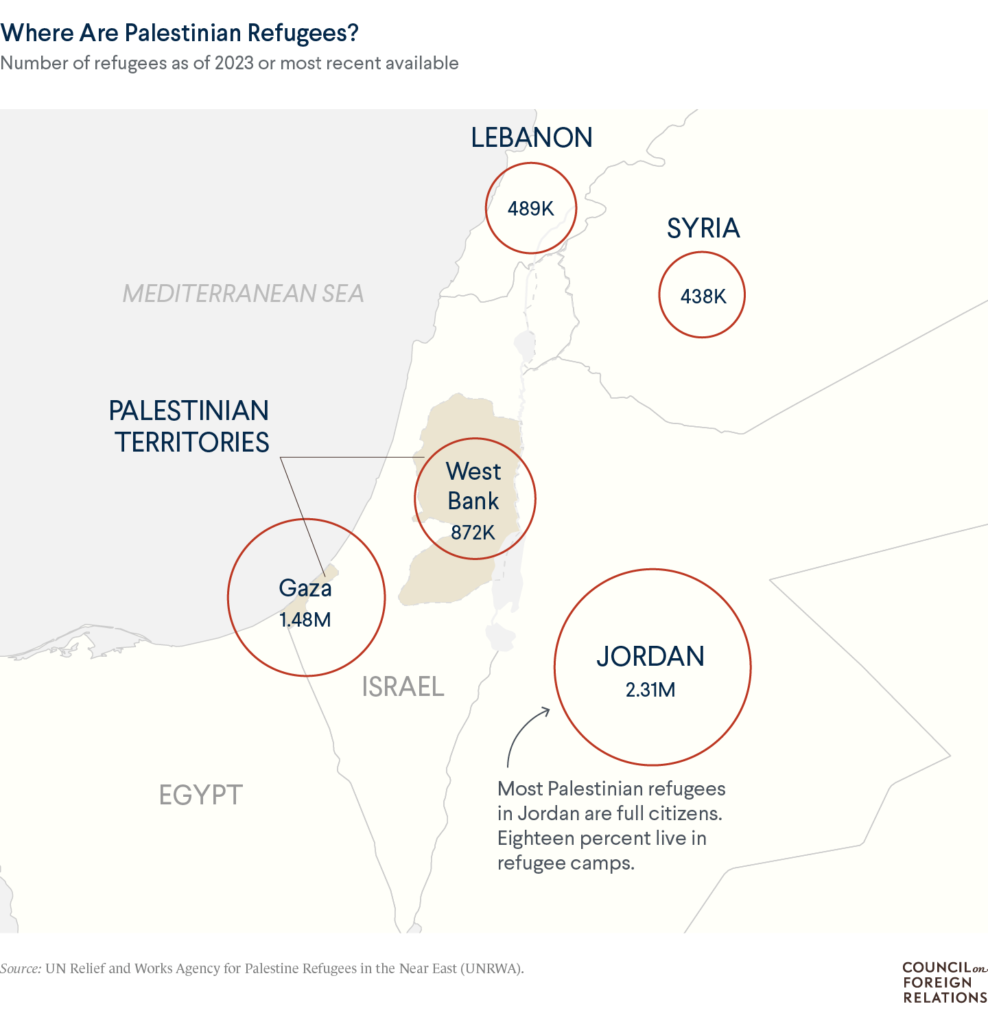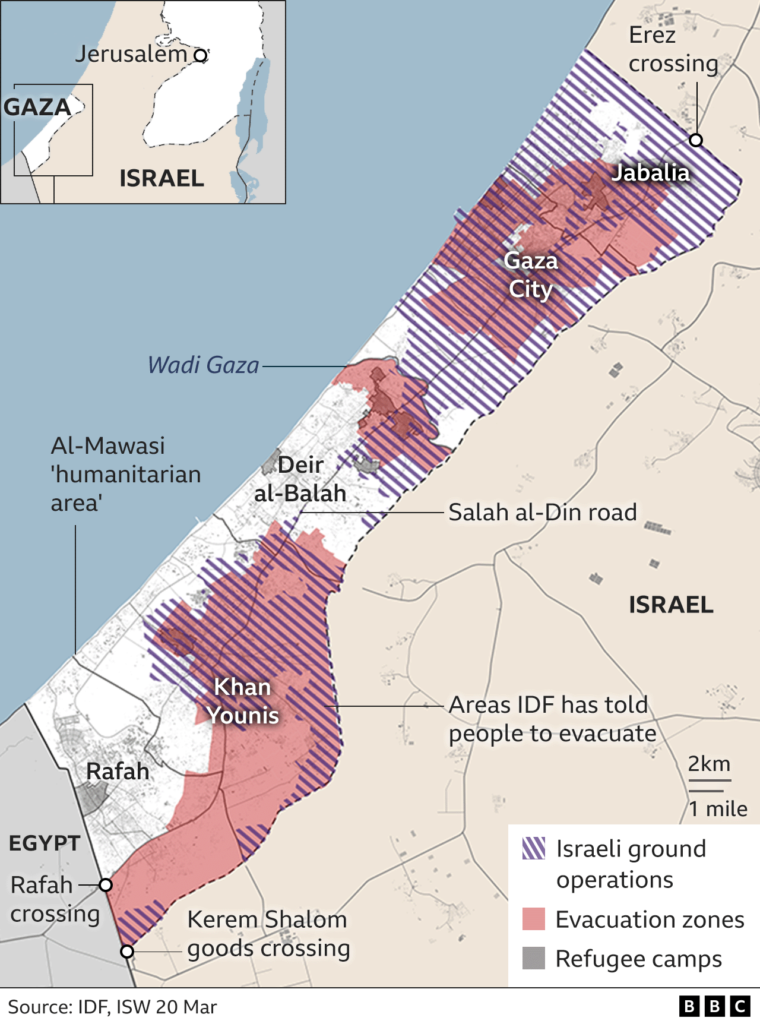Over the recent years, college campus protests have seen a surge in activity. Organized mostly by student activists, they highlight key issues such as allegations of human rights abuse, calls for Palestinian statehood, and advocacy for the Boycott, Divestment, and Sanctions (BDS) movement against Israel. These protests have led to debates about free speech, academic freedom, and the boundaries of campus activism, with the involvement of faculty, and the arrest of many faculty and students by police.
The roots of the Israeli-Palestinian conflict stretch back to the late 19th and early 20th centuries, with the rise of nationalist movements among both Jews and Arabs in the region of Palestine. The Balfour Declaration of 1917, in which the British government expressed support for a “national home for the Jewish people” in Palestine, set the stage for increasing tensions (Council on Foreign Relations, 2018). Following the end of World War II and the Holocaust, international support for a Jewish state grew, leading to the United Nations’ 1947 partition plan to create separate Jewish and Arab states.
The establishment of Israel in 1948 and the subsequent Arab-Israeli War resulted in the displacement of hundreds of thousands of Palestinians, an event Palestinians refer to as the Nakba (catastrophe) (Council on Foreign Relations, 2018). Over the decades, multiple wars, intifadas (uprisings), and peace attempts have failed to resolve the conflict, leaving deep-seated grievances on both sides.
Insights from History for Current Understanding
- Colonial and Post-Colonial Dynamics: The Israeli-Palestinian conflict is deeply entwined with the legacy of colonialism. Understanding the British mandate period and the role of international powers in shaping the region’s borders and political dynamics is crucial. This historical context helps explain the complex territorial and political claims that fuel the conflict (BBC News, 2020).
- Nationalism and Identity: The conflict is also a clash of national identities. Jewish nationalism (Zionism) and Palestinian nationalism both seek self-determination and recognition. Historical events, such as the creation of Israel and the Nakba, have profoundly shaped these identities. Recognizing the historical narratives and traumas of both sides can foster empathy and a more nuanced understanding of the conflict (Institute for Palestine Studies, n.d.).
- Failed Peace Processes: History shows numerous attempts at peace, from the Camp David Accords to the Oslo Accords. Analyzing why these efforts failed—whether due to political leadership, mutual distrust, or external pressures—can offer insights into what might be needed for successful future negotiations (Foreign Affairs, 2023).
- Grassroots Movements and Civil Society: Historically, grassroots movements have played a significant role in both exacerbating and mitigating conflict. The rise of student activism and civil society initiatives can be seen as part of this tradition. Understanding how these movements have operated in the past can guide current and future efforts to build peace from the ground up (New York Times, 2023).
Potential Solutions and Greater Understanding
- Promoting Dialogue and Education: One potential solution lies in promoting dialogue and mutual understanding. Educational programs that teach the histories and perspectives of both Israelis and Palestinians can help break down stereotypes and build empathy. Universities can play a crucial role in fostering such dialogue (BBC News, 2020).
- Support for Non-Violent Movements: Historical successes in non-violent resistance, such as the American Civil Rights Movement or the anti-apartheid struggle in South Africa, offer models for how Palestinian activism can pursue its goals without resorting to violence. Supporting non-violent movements and leaders can be a path towards peaceful resolution (Foreign Affairs, 2023).
- International Mediation and Pressure: The international community has historically played a significant role in the Israeli-Palestinian conflict. Effective mediation and sustained pressure from international bodies can help bring both parties to the negotiating table. Learning from past international interventions, both successful and failed, can inform current efforts (Institute for Palestine Studies, n.d.).
- Economic and Social Development: Addressing economic disparities and promoting social development in Palestinian territories can help reduce tensions. Historical examples, such as the Marshall Plan in post-World War II Europe, demonstrate how economic support can foster stability and peace (Council on Foreign Relations, 2018)
The pro-Palestinian protests on college campuses are part of a broader, historically rooted struggle. By understanding the historical origins and dynamics of the Israeli-Palestinian conflict, we can better appreciate the motivations and goals of these protests. Historical lessons highlight the importance of dialogue, non-violent activism, international involvement, and economic development in seeking a resolution. As students and educators, leveraging this historical knowledge can help create a more informed, empathetic, and effective approach to advocacy and conflict resolution.
Source: Council of Foreign Relations

Source: BBC News

Sources
Council on Foreign Relations. “Israeli-Palestinian Conflict.” Accessed May 18, 2024. https://www.cfr.org/.
Institute for Palestine Studies. “Pro-Palestine Columbia Students Attacked With Israeli Chemical.” Accessed May 18, 2024. https://www.palestine-studies.org/en/node/1655130.
BBC News. “Timeline of Key Events in the Israeli-Palestinian Conflict.” Accessed May 18, 2024. https://www.bbc.com/news/world-middle-east-54116567.
Foreign Affairs. “The Israeli-Palestinian Peace Process: Lessons from the Past.” Accessed May 18, 2024. https://www.foreignaffairs.com/.
New York Times. “Student Activism and the Israeli-Palestinian Conflict.” Accessed May 18, 2024. https://www.nytimes.com/.

Comments are closed.